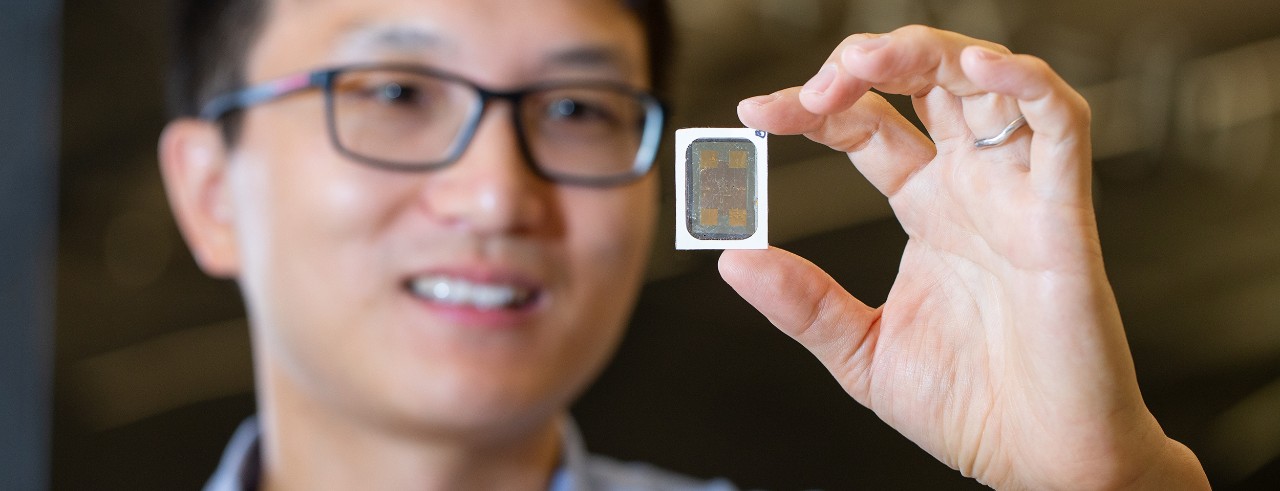
UC ranked by National Academy of Inventors
University makes top 75 among nation’s universities for generating patents
The University of Cincinnati has been recognized as one of the top universities that advance innovation and invention in the United States by the National Academy of Inventors (NAI).

Geoffrey Pinski, UC’s assistant vice president for technology transfer
The newest ranking list from the NAI, “Top 100 U.S. Universities Granted U.S. Utility Patents,” used data provided by the United States Patent and Trademark Office to highlight the top American universities that generated utility patents. UC was ranked No. 72.
“It’s great news,” said Geoffrey Pinski, UC’s assistant vice president for technology transfer. “It reflects the work and support of our team with our faculty, starting projects and seeing them to one of the natural endpoints, which is receiving protection from the patent office.”
According to the data from the NAI, UC had 23 utility patents granted in 2022.
At the 1819 Innovation Hub, UC’s technology transfer team is composed of specialists in licensing, business development and IP matters, with vast experience in transferring technologies across a broad array of research and innovation fields.
The technology transfer team helps UC faculty protect the outcomes of the research, receive patents, understand the market potential of their creations and find partners who are interested in converting their intellectual property into commercial products.
Through the Ohio IP Promise, UC has made the process of licensing of intellectual property simpler and faster.
“It enhances the outcomes of research,” Pinski said of the tech transfer process at UC. “Faculty are working every day on a variety of problems and finding solutions.”
UC faculty who are interested in the technology transfer process should reach out to the tech transfer team to start the process.
UC firsts and inventions
UC has a history of innovation, including:
- First steam-powered fire engine — Alexander Latta, faculty member, College of Applied Science's predecessor school OMI, helped develop this technology in 1852.
- National Weather Service — First observations leading to the National Weather Service came from Cincinnati Observatory director Cleveland Abbe in the 1860s.
- First program of cooperative education — Developed by engineering dean Herman Schneider in 1906. He later became the university president.
- First electronic organ — Invented by student Winston Kock, Eng '32, MS (Eng) '33, HonDoc '52, as his electrical engineering undergraduate thesis.
- First antihistamine, Benadryl — Chemical engineering researcher George Rieveschl (1916-2007), A&S ’37, MS (A&S) ’39, PhD (A&S) ’40, HonDoc ’56, developed it in the 1940s.
- First oral polio vaccine — Developed by medical researcher Albert Sabin, HonDoc '74, in the late 1950s. Approved for use in the United States in the late 1960s, the vaccine has saved untold millions around the world from paralytic polio and death.
- First heart-lung machine — In 1951, UC cardiologist Samuel Kaplan, chemist Leland Clark and surgery professor James Helmsworth developed the world’s first functional heart-lung machine, located at Cincinnati Children’s Hospital Medical Center.
- First YAG laser used — In 1984, neurosurgery professor John Tew was the country’s first surgeon to receive FDA approval to use the YAG laser to vaporize previously inoperable brain tumors.
Featured image at top: Yeongin Kim, assistant professor of electrical engineering in UC's College of Engineering and Applied Science, created a patented new flexible skin sensor. Andrew Higley/UC Marketing + Brand
Innovation Lives Here
The University of Cincinnati is leading public urban universities into a new era of innovation and impact. Our faculty, staff and students are saving lives, changing outcomes and bending the future in our city's direction. Next Lives Here.
Related Stories
UC's art collection on display at the Contemporary Arts Center
January 5, 2026
University of Cincinnati leaders joined WVXU's Cincinnati Edition to talk about the university’s 200-year-old art collection, a new exhibition at the Contemporary Arts Center and the release of a companion book exploring the collection’s role in education and public engagement.
UC biochemistry student explores world of taste
January 5, 2026
A University of Cincinnati biochemistry student changed her career trajectory after being inspired by internships with a European Fortune 500 company.
Study finds police officers face higher long-term health risks
January 2, 2026
J.C. Barnes, a University of Cincinnati professor, is interviewed by Spectrum News about new research showing that the physical and psychological demands of law enforcement can contribute to earlier deaths.
